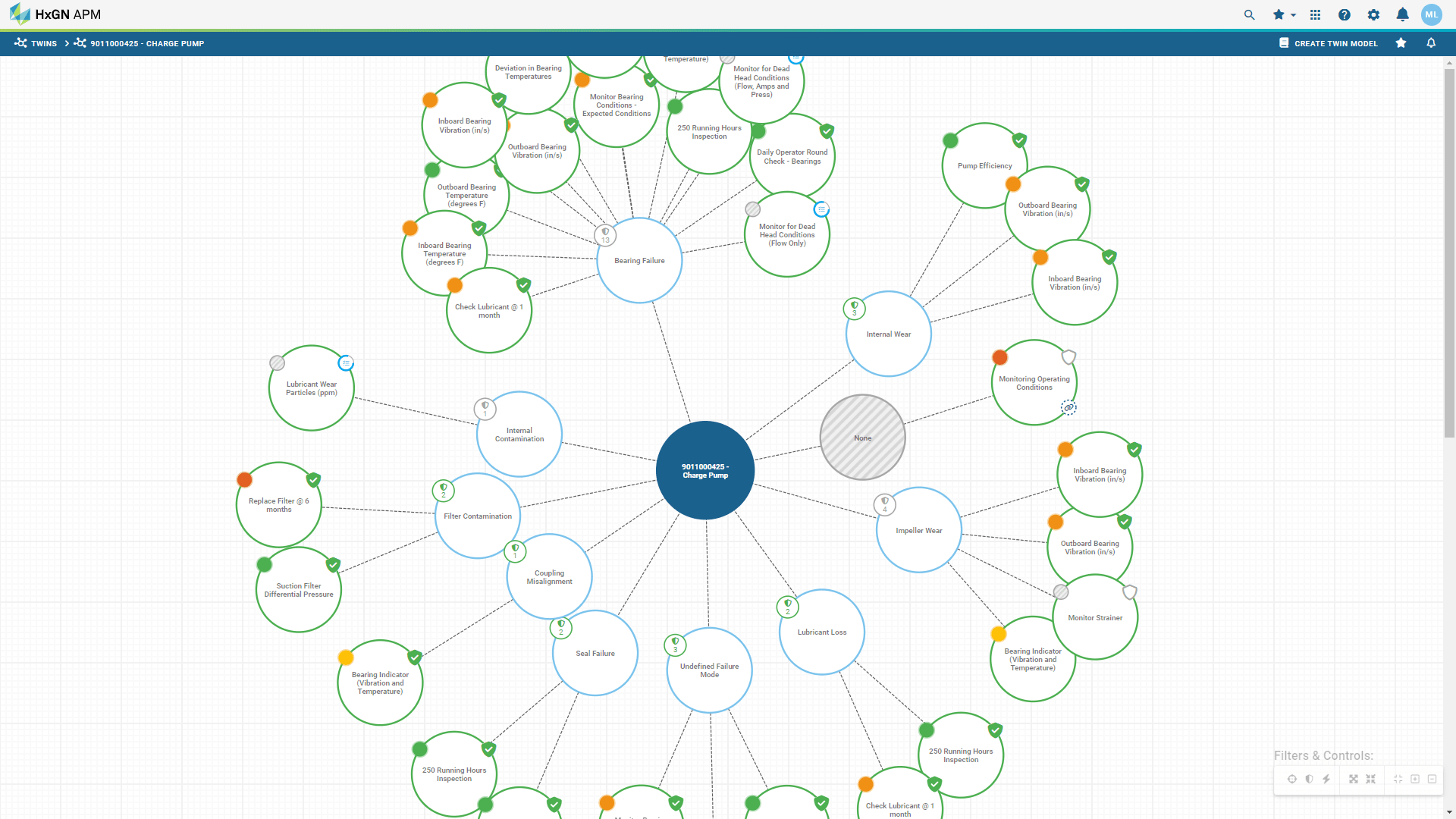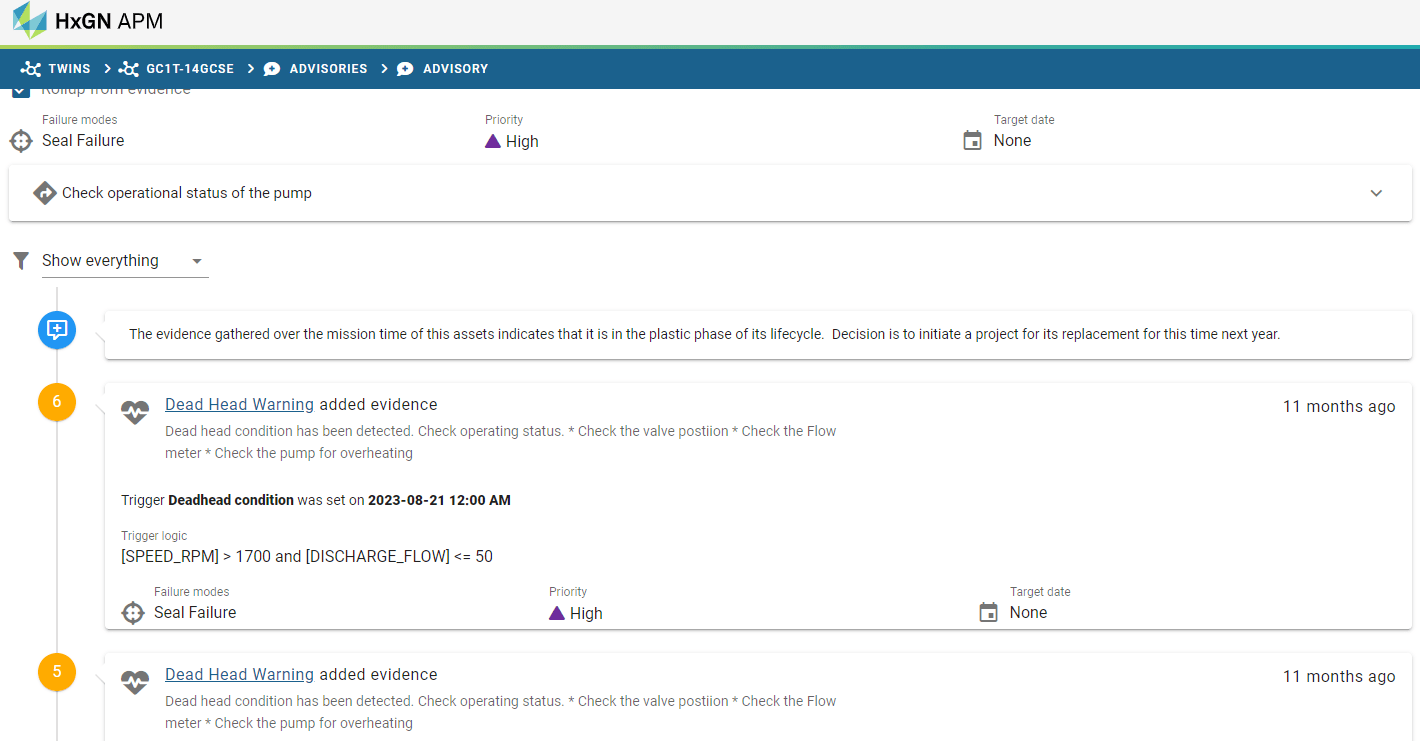HxGN APM Solves the Asymmetry of Information That Exists Between Asset Design and Asset Management

When walking through an airport recently, I saw an advertisement by one of the big consulting firms. It featured an image of a sheep with lots of wool, probably four or five times the norm. This got me thinking about the limits of assets. But how are the two connected, you may ask?
Well, what happens when a sheep becomes overgrown? Its wool gets matted and the added weight makes shearing the fleece more difficult - compromising its health and potentially affecting its lifecycle. The same can be said for assets that are overburdened and operated beyond the limits they are designed with. When operated and/or modified to make it perform beyond its design limits, the lifecycle can be compromised.
Incremental Capacity Improvements Differ Critically from Overextending Asset Design Limits
Now, I know this is all clever advertising, so I won't dwell on what I believe are inconsistencies in this message. The important point is that assets are designed with specific capabilities and performance requirements. Operating them, modifying them or maintaining them in ways that deviate from their design (regardless of good intentions) can and will introduce problems and vulnerabilities that can threaten the asset lifecycle.
Celso de Azevedo gives us a great illustration of this concept in his book, 'Asset Management Insights: Phases, Practices and Value':
“Imagine that you have a felt tip pen designed to draw a line that is 0.5mm wide (capacity) over a kilometer (performance). You decide that you want the line to be 0.7mm wide. As you know, you only have to push harder on the pen to widen the line. But, under such circumstances, will the pen be able to sustain the line over a kilometer? That is the question.”
We tend to deviate away from how the asset was designed, constructed and installed in how we operate and maintain that asset. We seek to get more from it, to push it beyond the performance capabilities it was meant for, while also expecting it to possess the same intrinsic reliability.
What if You Ignored the Manufacturer’s Recommended Maintenance for Your New Car?
A corollary to this is how automakers design for reliability. Whether you realize it or not, auto manufacturers put a great deal of effort into their warranty and recall program. They have a list of known issues that make up most of this exposure, that is worth tens of millions of dollars. With physics-based simulation, the original equipment manufacturer can run numerous scenarios that help them determine how many claims and recalls could come their way.
These experts understand how their products fail and what to do to prevent them from failing. This is why we take our new cars back to the dealer, especially during the warranty period, for routine service. They know what preventive maintenance needs to be done and how to do it, because they're an extension of the organization that designed and manufactured that vehicle. They have the tooling to extract the data from the car's numerous computers and evaluate the condition protections that are designed into the car's software.
Information Gaps Between Designer, Installer and Owner Swallows up Value
There is an asymmetry of information between the asset's design and how it is operated and maintained. What does Smart Digital Reality™ do to address this? As reported by independent research and advisory firm Verdantix in their 2024 APM Green Quadrant report, information management is part of what makes HxGN APM stand out as an innovator.
The lifecycle of an asset begins at its initial conceptual design, planning and acquisition, through to its eventual decommissioning. The care of the asset, down to the specific protection aimed at reducing the risk of failure, is specified best by the designers. Like the auto maker, asset protections meant to prevent failure, can be designed into the asset's lifecycle and supplied to the owner/operator. This means the aggregation of the data, models and strategies are ready to be operationalized at handover.
An example of this capability is HxGN APM. Consider the asset lifecycle phases depicted below.
|
|
|
|
|
|
|
|
|
1 |
2 |
3 |
4 |
5 |
|
1. Procurement and Construction: HxGN APM enables work processes, including the development of asset strategies, according to asset functional requirements and system specifications. |
|
|
2. Handover: Asset responsibility transfer includes the assurance that asset strategies are in place and ready to be operationalized by connecting asset twins (strategy models) to all appropriate sources of data and information. |
|
|
3. Operation: Once the asset is in active use, HxGN APM provides visibility to the asset strategy to ensure it is in place and that all the switches are in the ‘on’ position. |
|
|
4. Maintenance and Optimization: HxGN APM enables the organization to continuously compound its collective understanding of asset risk, cost and performance, and enables the organization to make high quality decisions about the state of the asset. |
|
|
5. Decommissioning or Disposal: HxGN APM facilitates the analysis of the asset over various stages of its lifecycle, supporting strategic, risk-based decisions on whether to extend, decommission or dispose of the asset. |
|
We can see the applicability of Smart Digital Reality for greenfield projects. It is also applicable to brownfield operations where asset strategies are missing, or existing maintenance practices have deviated too far from the way the asset was designed and installed.
Optimal Asset Performance Hinges on Aligning Operations with Design Intent
In conclusion, effective asset management requires a delicate balance between maximizing performance and adhering to design specifications. The analogy of the overgrown sheep and the felt-tip pen illustrate the potential pitfalls of pushing assets beyond their intended limits. Smart Digital Reality, exemplified by solutions like HxGN APM, bridges the gap between asset design and operation, offering a comprehensive approach to managing assets throughout their lifecycle. By integrating information from conception to decommissioning, organizations can make informed, risk-based decisions that optimize performance while respecting the inherent limitations of their assets. This holistic approach not only enhances reliability and efficiency but also ensures that assets, like well-tended sheep, yield the best possible value throughout their operational life.
Ask Hexagon about how Smart Digital Reality can help achieve optimal asset cost, risk and performance.





